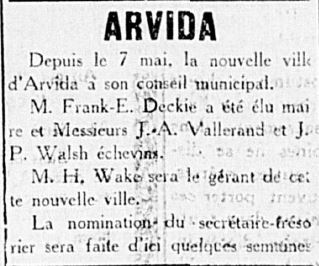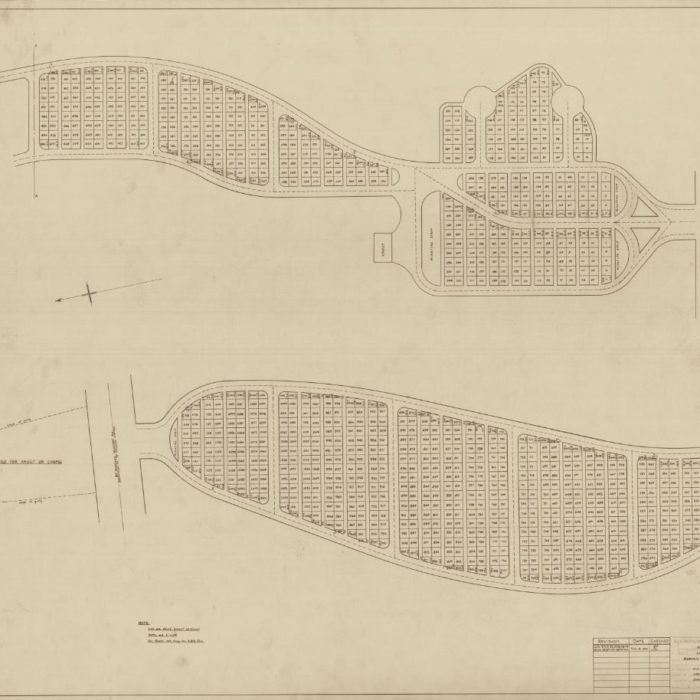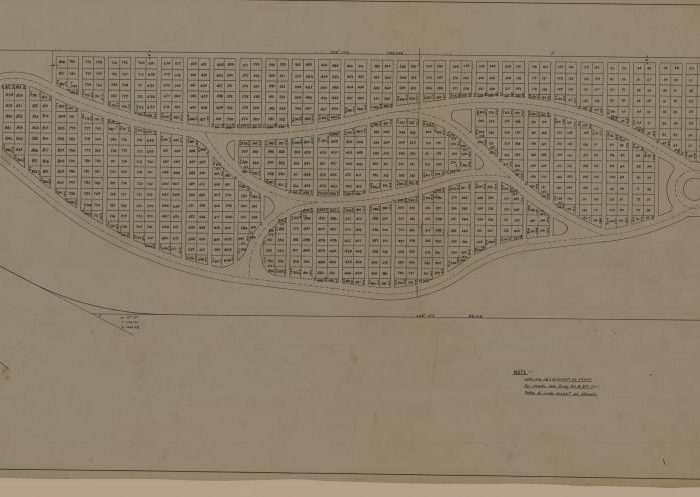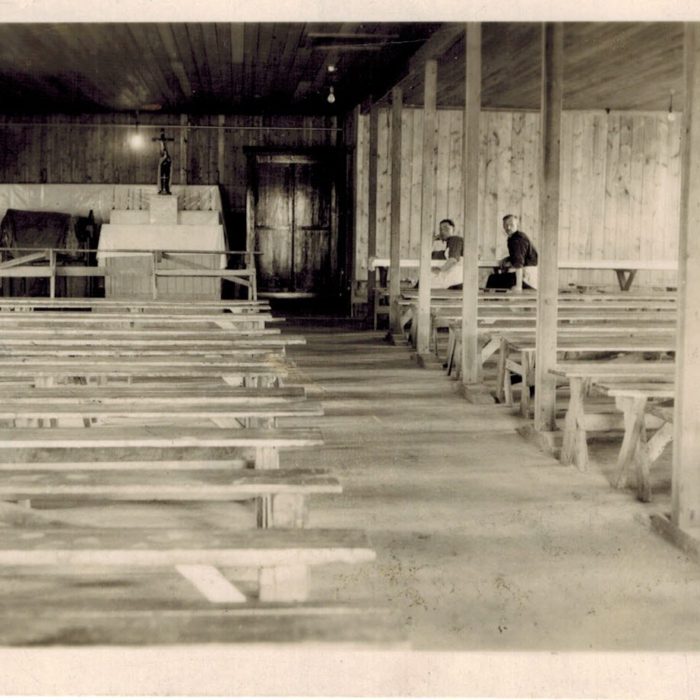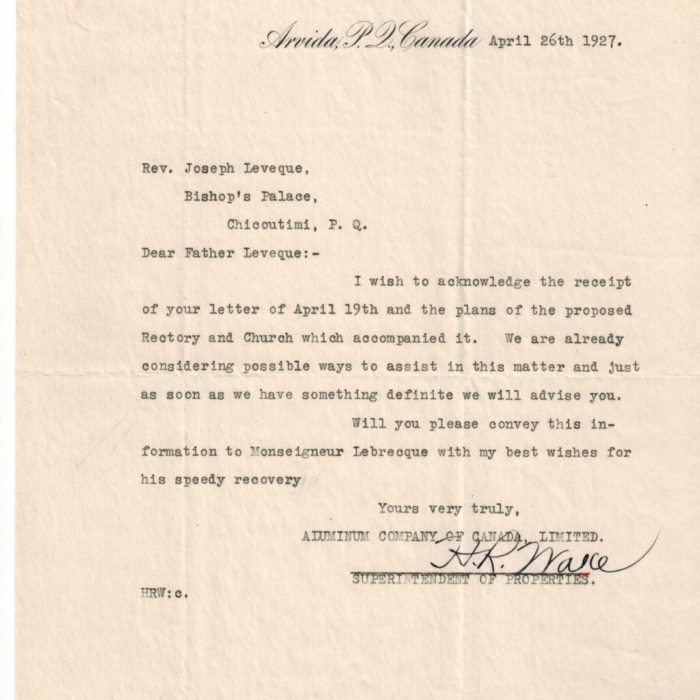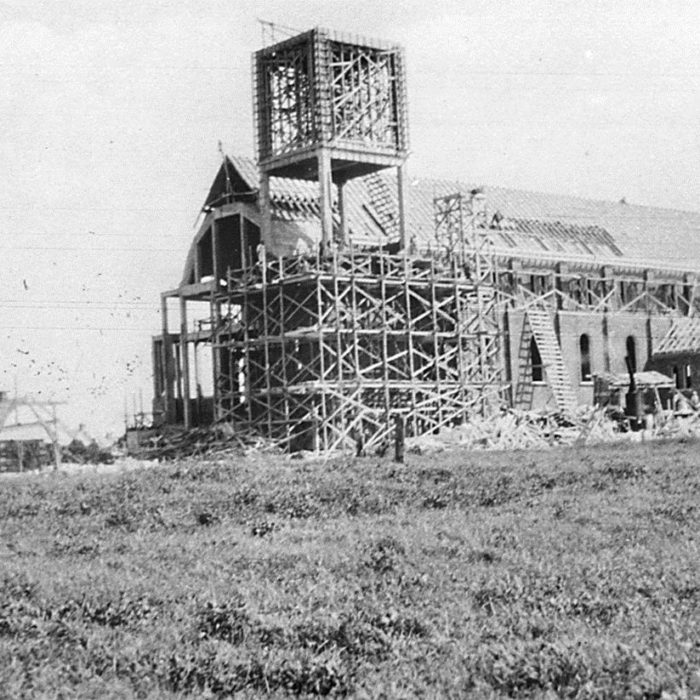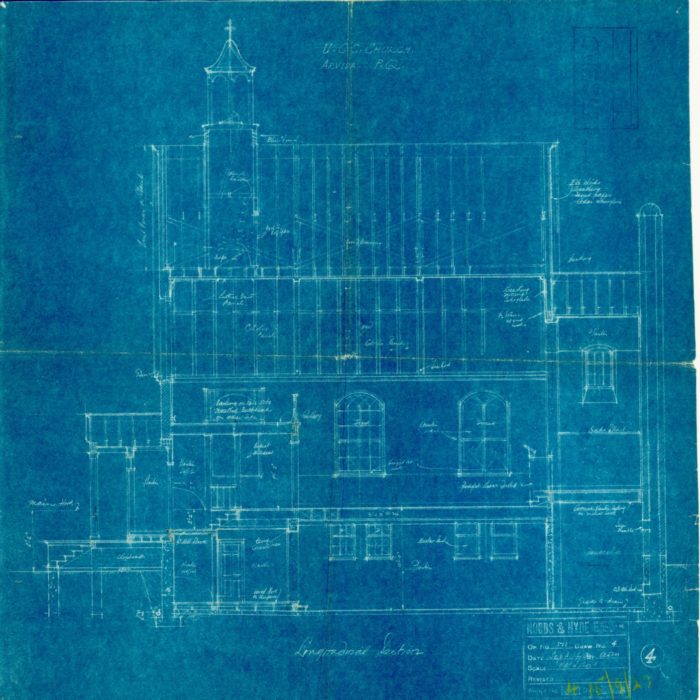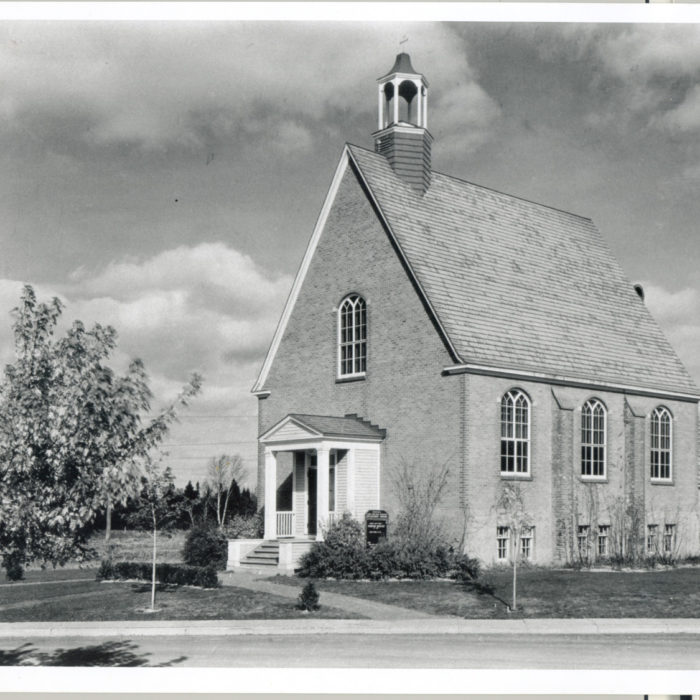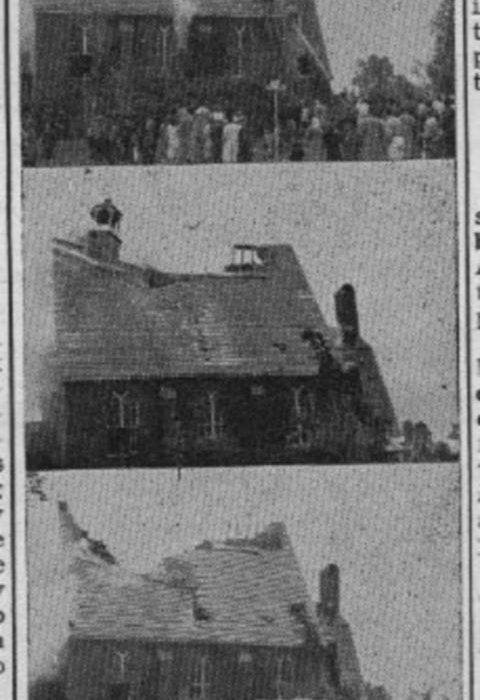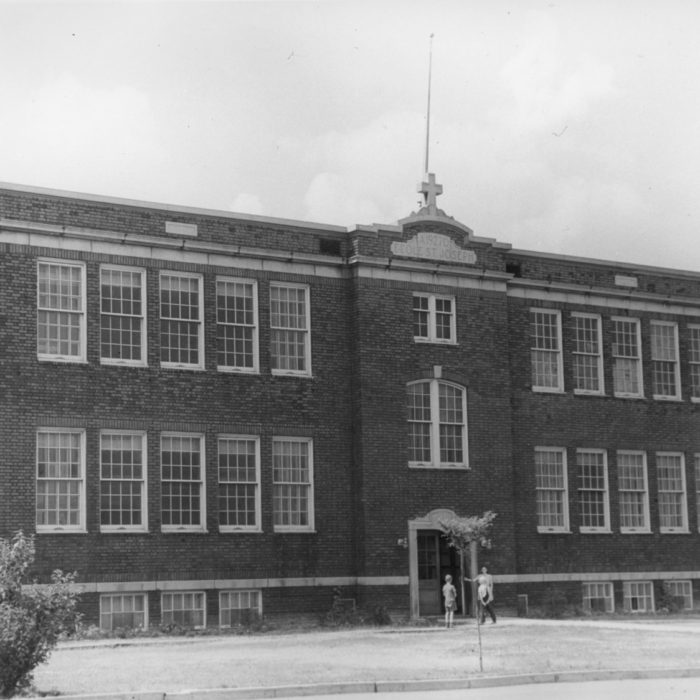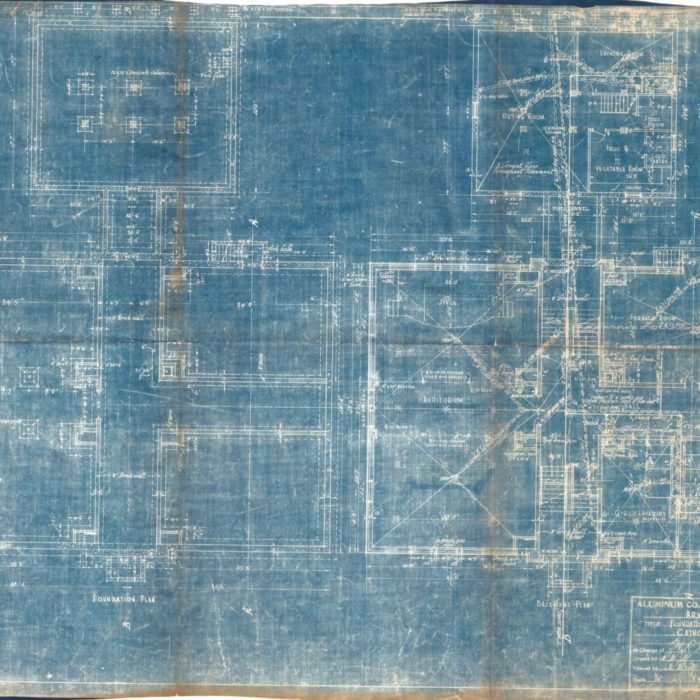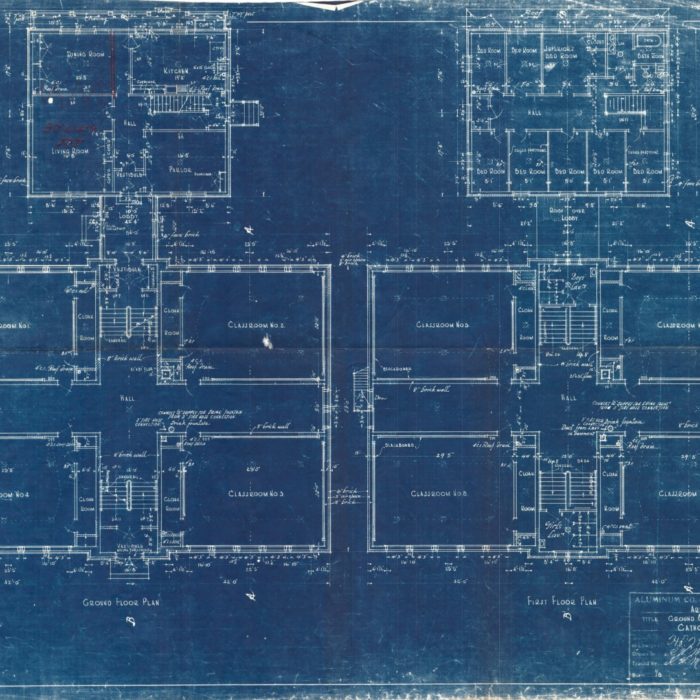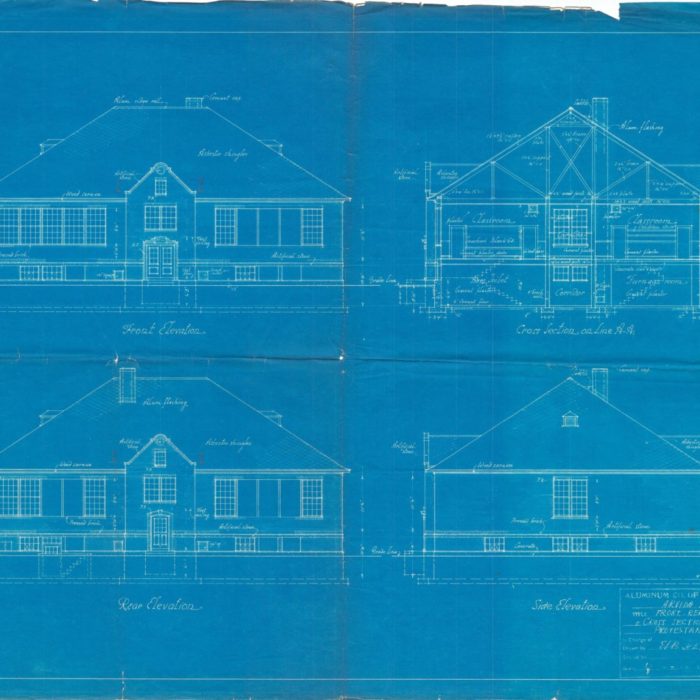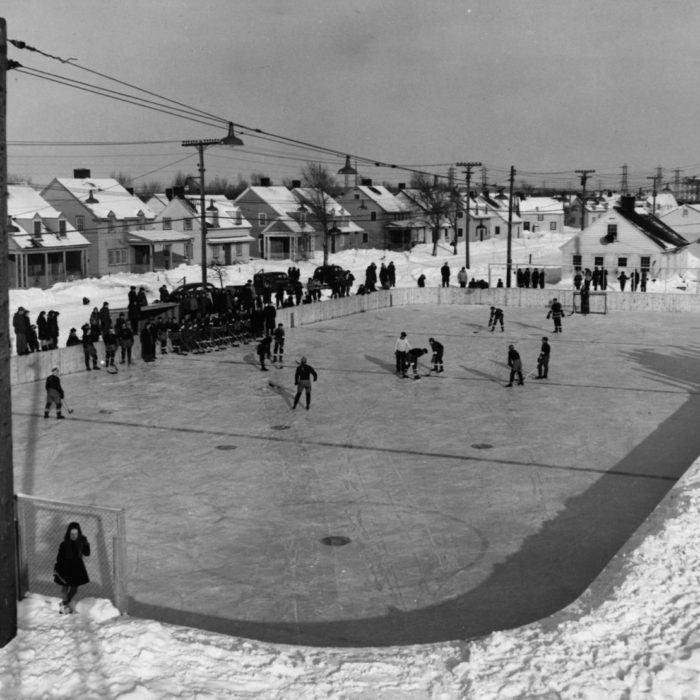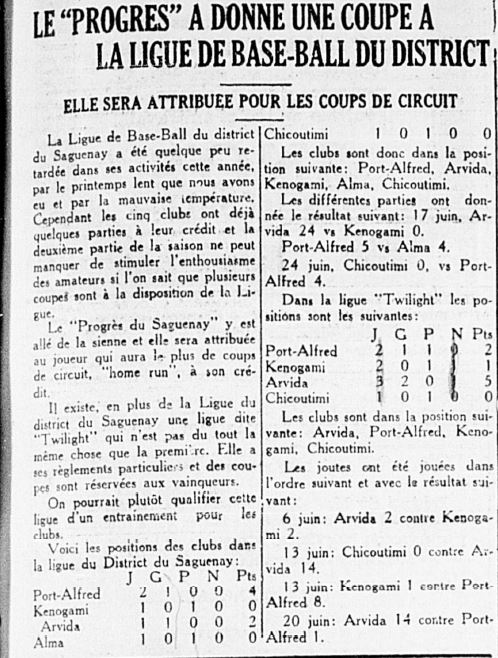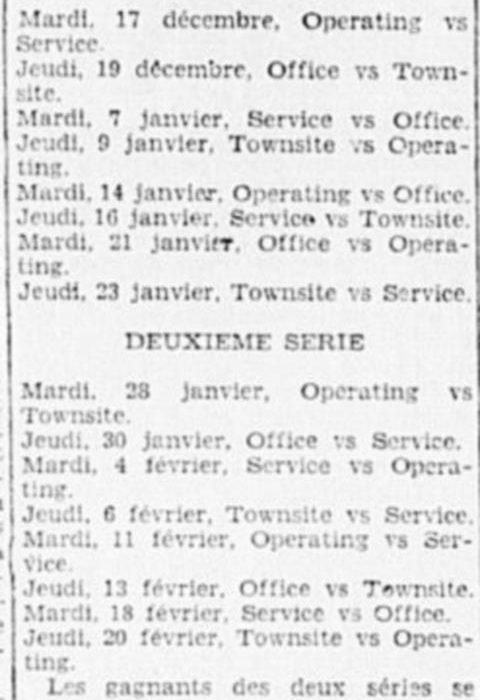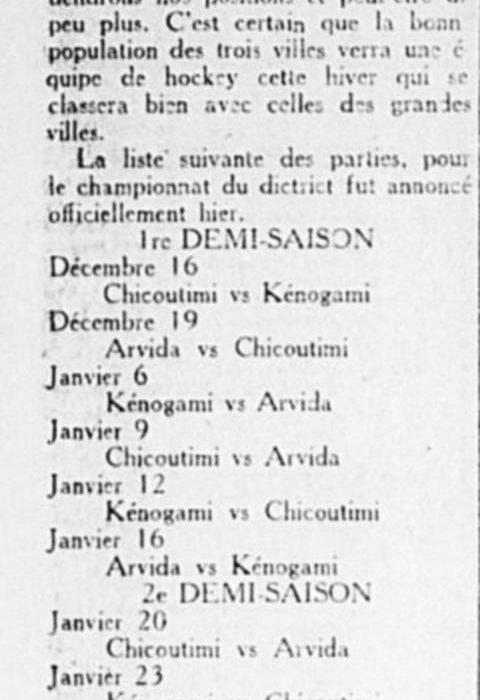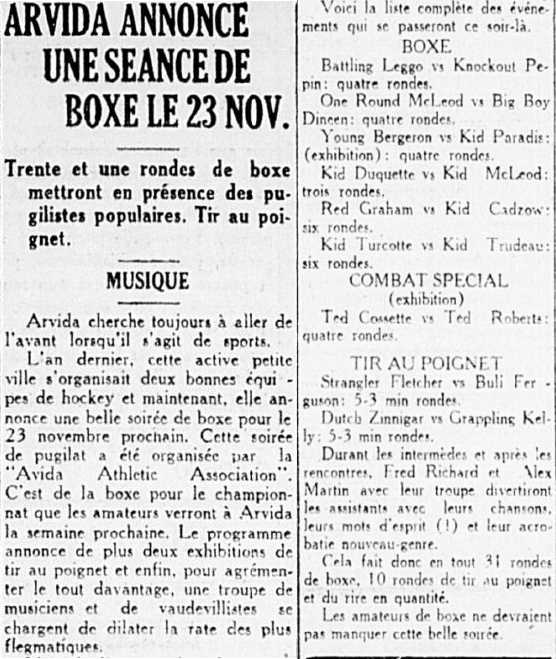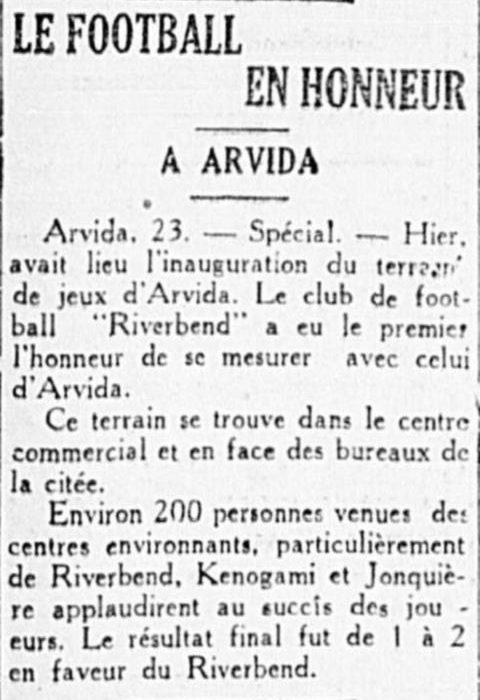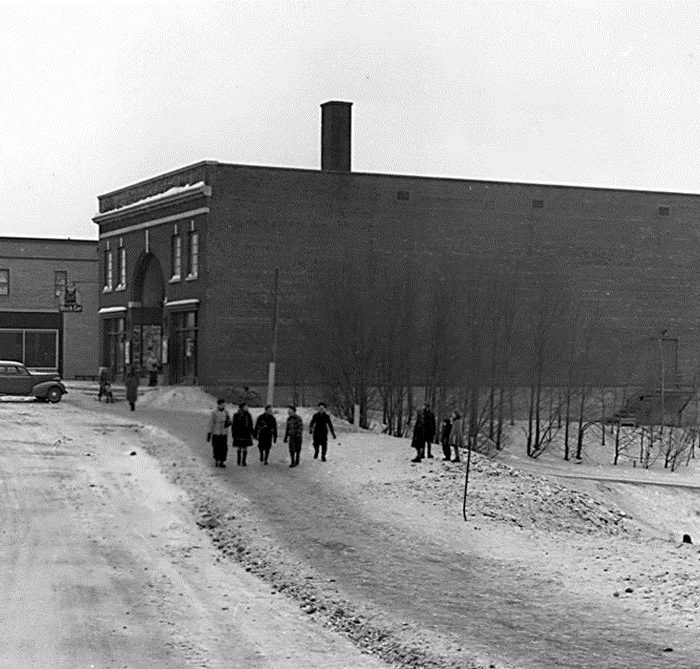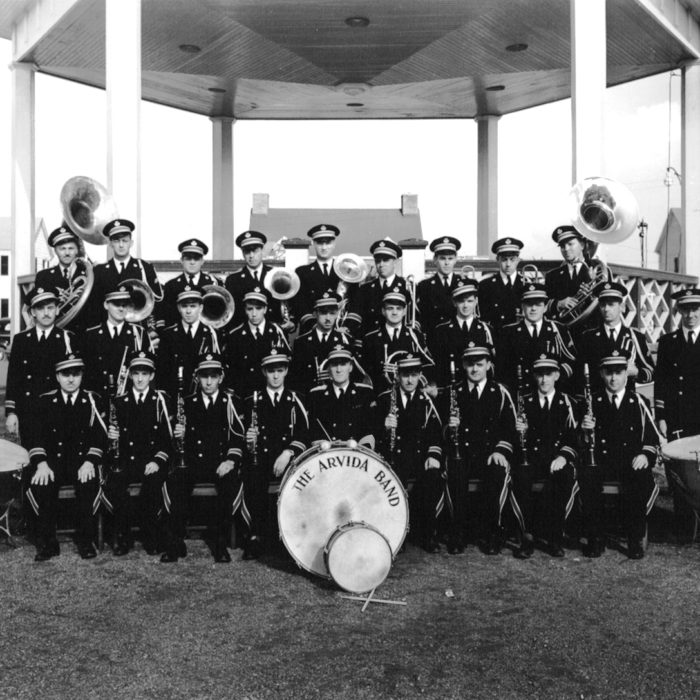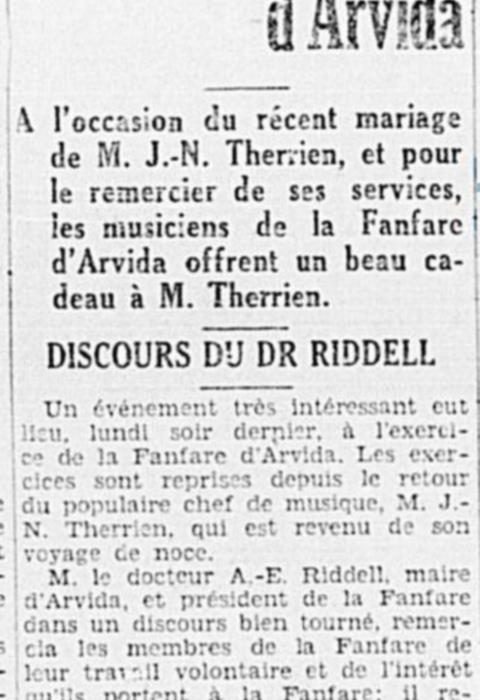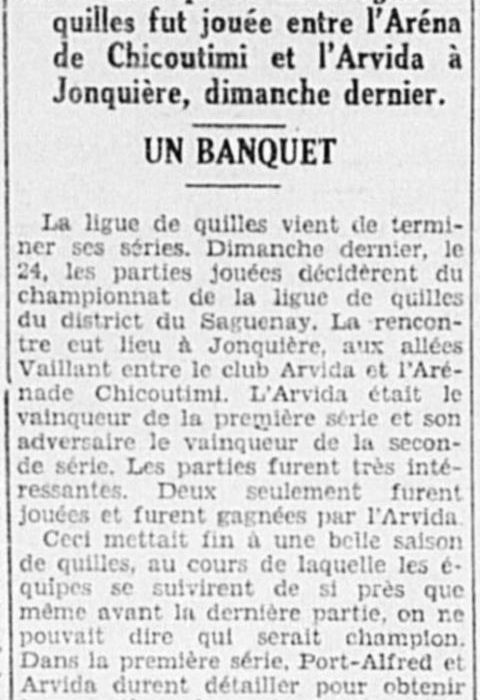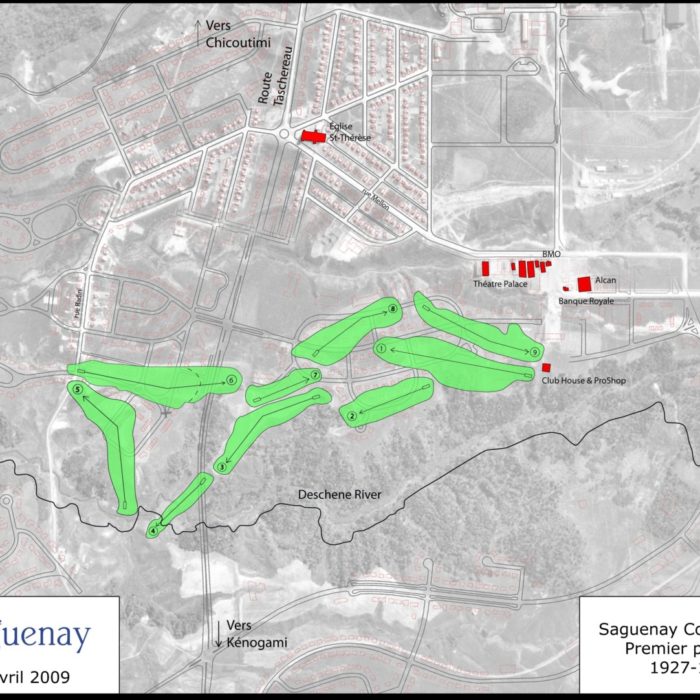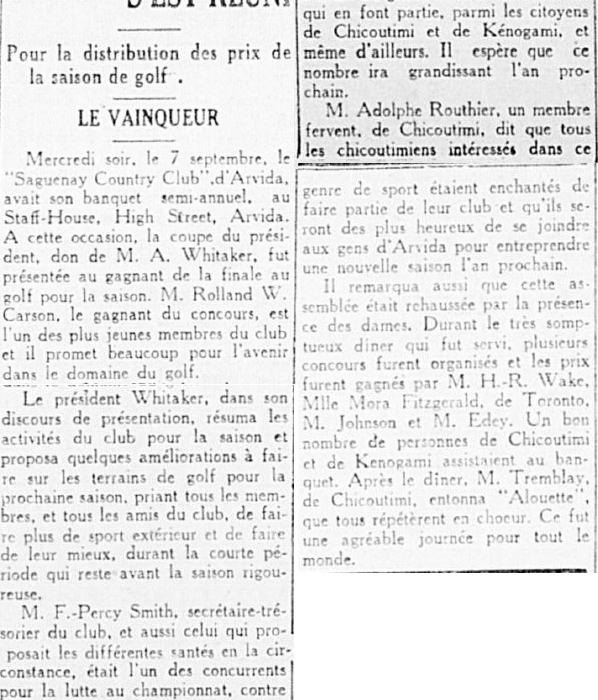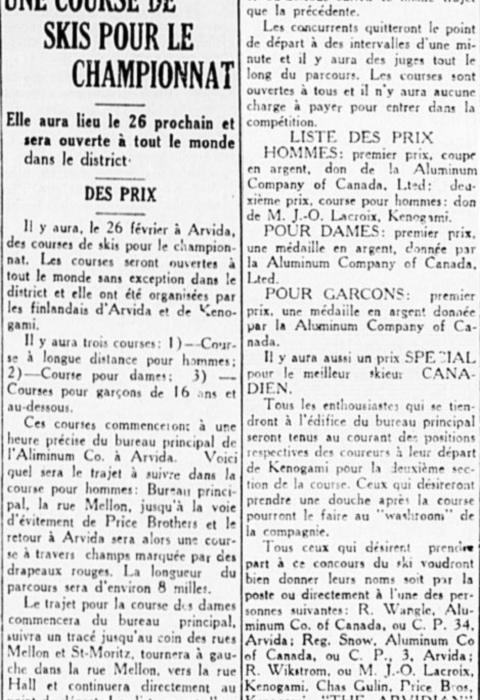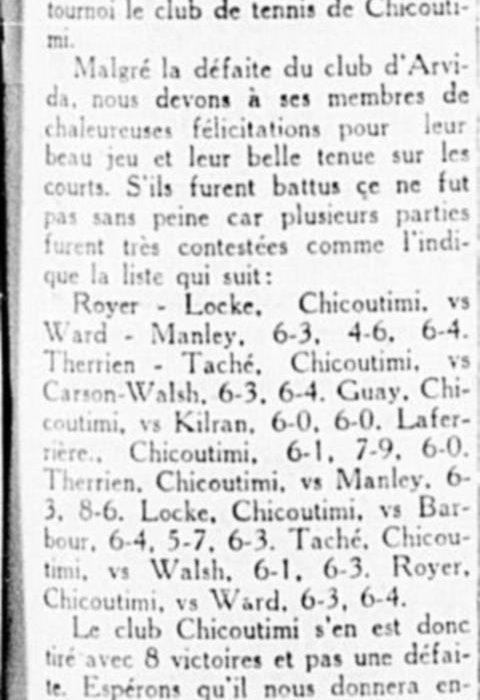Managing the Aluminum City
In 1926, Alcoa initiates proceedings with the provincial government to make Arvida a municipality. The charter, which constitutes the law of incorporation of the City of Arvida, is passed on 24 March 1926. The company persuades the government to modify the Cities and Towns Act in order to insert provisions relating to the quality of the urban landscape to protect and maintain the architectural and urban qualities of its social project. The Act stipulates that the city shall be governed by a municipal council consisting of three aldermen for a fixed term. The council then appoints a mayor for a term of two years. On 7 May 1926, the first meeting of the council was held in a construction building. The three aldermen appointed were J.-Achille Vallerand, manager of the Roberval-Saguenay railway, John P. Walsh, Alcoa’s chief accountant in Arvida, and Frank E. Dickie, potroom manager. The latter is Arvida’s first mayor.
Until the 1940s, the administration of the city was entrusted to the representatives of the Aluminum Company of Canada, who ensured the city’s construction and development. Desiring to disengage from the management of the city, while ensuring the preservation and continuity of Arvida’s image, the company set up an urban planning commission in 1942. The latter is composed of Frederick Gage Todd, Harold J. Doran, Harold Lea Fetherstonhaugh, R.-A. Lemieux and C.-O.-P. Klotz, whose role is to ensure the development and conservation of the territory.
The city of Arvida had six mayors between 1926 and 1974. After the short term of Frank E. Dickie, John P. Walsh takes over, followed by Arthur E. Riddell, the company physician, Jean-Louis Fay, Georges Hébert and, finally, Francis Dufour. On 1 January 1975, the town of Jonquière was formed as a result of the merger of Jonquière, Kénogami and Arvida.
A multiethnic community
A diverse population
In the first half of the twentieth century, industrialization in the Saguenay-Lac-Saint-Jean region resulted in the arrival of a large number of workers in the region. While some of the newcomers come from other parts of Quebec, many are of diverse origins and have worked on major construction sites, introducing diversity into the cultural landscape.
During Alcoa’s establishment in Arvida, a large workforce is required for construction of the aluminum smelter and the city. During the first years (1925 to 1927), a large proportion of the workers come from outside the Saguenay region, and one third are of foreign origin. In total, there are 36 nationalities, including Poles, Swedes, Norwegians, Finns, Czechoslovaks and Italians. English Canadians account for 16%, while French Canadians from other regions are estimated at 30% of Arvida’s population.
The coming of workers of various origins is partly due to the lack of workers in the region. Also, the start-up of the smelter requires specific new expertise. As a result, the vast majority of managers come from other Alcoa establishments in North America.
The population of Arvida is rather unstable in the early years. A large proportion of the workers will leave the city before 1928. However, a more stable population is established afterwards, thus ensuring the continuity of the workforce and technical knowledge. The latter include English-Canadians, a majority of French-Canadians and 18 other nationalities.
Religion
Religion occupies an important part in the community life of the new city. On the Catholic side, the first mass took place in a construction camp on 29 November 1925. Protestants, for their part, held their first religious service on 12 December 1926, in a house located on Davy Street. As of 1928, two institutions are open for religious services: Sainte-Thérèse-de-l’Enfant-Jésus and First United Churches. Naturally, people settled near their place of worship, according to their faith.
Following discussions between Harold R. Wake and Bishop Michel-Thomas Labrecque, bishop of the diocese of Chicoutimi, the company donates land and $40,000 for the construction of a church and a presbytery. Built according to the plans of Alfred Lamontagne and Armand Gravel, Sainte-Thérèse-de-l’Enfant-Jésus Church was inaugurated on 24 December 1928. Parish life is organised around the liturgical calendar, which is filled with celebrations, festivals, processions and special devotions. As the Arvidian population is very diverse, religious gatherings are an important opportunity to integrate the population. Thus, Sainte-Thérèse-de-l’Enfant-Jésus Church welcomes all Roman Catholics and those who share similar rites: the Irish organise events for the benefit of the church, in addition to having a special mass for St. Patrick’s Day. The feast of Our Lady of Pompeii is celebrated for the Italians, the Acadians celebrate the Assumption and the Slovaks can listen to the celebration of Christmas with songs in their language.
On Easter Day, on 8 April 1927, members of the United Church attended the first service in the new church celebrated by Pastor H. B. Campbell. Built by Alcoa, First United Church is located at the corner of Moissan and Regnault Streets. The church also serves as a host community for non-Francophones. The building is called the Community Church and serves as a centre for various community activities, including scouts, chess clubs, veterans and the Engineering Institute. On June 8, 1946, the First United Church was destroyed by fire. It was not until 1949 that two new churches were built: St. George the Martyr and First United Churches.
Education
As in any utopian project, the well-being of employees occupies a prominent place. In Arvida, education is therefore a priority for Alcoa's leaders. Starting in July 1926, English classes were given in the evening to the foreign population with the aim of integrating it. The same will happen a little later with French classes given to Mrs. Parks, Wake, Whitaker, Dubose and Wyber, spouses of Alcoa managers.
Catholic schooling
In October 1926, Juliette-T. Ryland is hired to teach the Catholic children of Arvida. The courses take place in houses that serve as schools. The first of these school-houses is located at the corner of Oersted and Moritz streets, then a second one opens on Volta Street (today Lavoisier). These schools are divided into four rooms: two on the ground floor and two on the upper floor.
Starting in 1927, the company undertakes construction of two schools: one for Catholics and the other for Protestants. Saint-Joseph School, completed on 26 October 1927, receives its first students on 16 November. J.-Achille Vallerand, manager of the Roberval-Saguenay railway and president of the Arvida School Board, says: “The construction of this school will be the starting point of great progress in education for our city […]. We all know and appreciate that our children’s education is also the foundation of the society of tomorrow”. Run by the Sisters of Good Counsel, who live in the convent behind, the school has eight classes. Anglophone Catholic children also attend Saint-Joseph, where they are taught by Sister Marie de la Victoire.
At first the pupils study the basic primary school subjects. They include the following: religious instruction, French, mathematics, Canadian history, geography, drawing, music, English, agriculture, as well as hygiene and manners. Over the years, elective and advanced primary courses are added, along with home economics, a commercial course and, finally, trade school for the boys.
Protestant schooling
The first classes for English-speaking Protestant children are held in a school-house under the supervision of Misses Irene Kelly and Copeland. On 21 July 1927, Alcoa begins construction of the Protestant school, accepting the first students on 12 December. Teaching is done by laymen. At the opening, the staff consists of Harry Johannson, his wife and Irene Kelly.
The arrival of many workers of different nationalities who came to settle in Arvida bring a great diversity in the city. The Protestant school, known as the Arvida Intermediate School, welcomes non-francophone students for several years. Thus, a large proportion of the pupils of the school only speak a foreign language upon entering it.
Initially, the education provided covers grades 1 to 9. Beginning with the school year 1928-1929, new training courses were added: industrial arts for boys and home economics for girls. In 1943, the school attained the status of a secondary-level institution and became Arvida High School. From then on, the increased staff can offer a wider range of courses, including typing, shorthand, physics, chemistry and advanced mathematics.
Recreation
Moritz Park
As the city is built, social and community life is organised. The company, which looks after the population’s spare-time interests, takes charge ofrecreational activities. In 1926, Alcoa set up a body responsible for organising amateur sports: the Arvida Athletic Association (AAA). It is made up of a committee composed of three directors, plus the presidents of all sporting disciplines. In addition, the company is committed to building a club house and a covered ice rink in the near future. Initially, the AAA limits its activities to baseball, hockey, curling, boxing, wrestling and dancing.
Organised and sponsored by the company, the activities encourage development of local solidarity, fostering community spirit. Moritz Park is home to many of these activities, including the sports day in 1926. Known as the Field Day, it features football, baseball and boxing matches, as well as various competitions including high jump, long jump and shot put.
In 1926, a hockey league and a baseball club were formed. Two years later, boxing, football and skiing clubs were added. Arvida clubs compete against neighbouring cities such as Chicoutimi, Port-Alfred and Kénogami. Moreover, the company organises competitions between intramural leagues of the various sectors of the plant, which has the consequence of stimulating team spirit in each of these sectors. There are intramural hockey, bowling and baseball leagues. Thus the departments confront each other: Operating vs. Service, Office vs. Townsite, Service vs. Office, etc.
The Palace Theatre
The popularity of film and movie-going in the early twentieth century inspires towns to build infrastructure for this leisure activity. In Arvida, films are initially projected in Block A until, as early as 1927, the town proudly inaugurates a cinema: the Palace Theatre. Built in accordance with Alfred Lamontagne’s plans, the Palace Theatre opens in 1929. Containing 500 seats, the theatre first features silent films accompanied bya piano. Subsequently, films are screened in English and later in French.
The Palace also serves as a concert hall. The Arvida band, founded on 4 April 1930, gave its first concert in November 1931. Very popular with the public, the band performed on various occasions, including festivals and religious, patriotic and civic celebrations. The company’s managers get involved in the band. Albert W. Whitaker, Superintendent of the Aluminum Company of Canada, lent his voice to perform On the Road to Mandalay and My Wild Irish Rose at a concert in 1932.
The basement of the theatre holds a large hall and two bowling alleys where the bowling league can practice.
Listen to the anthem of Arvida, interpreted by the Amadeus Choir.
Listen to the Arvida March, interpreted by the Saguenay Harmony.
The Saguenay Country Club
Some sports activities have more of an anglophone clientele, being more associated with their cultural life. This is the case for the Saguenay Country Club, the Arvida Tennis Club and the Arvida Fish and Game Club.
The first discussions concerning the possibility of building a golf course date back to 1926. Albert W. Whitaker quickly convinced Harold R. Wake, engineer in charge of the works, to build a golf course in Arvida. The Saguenay Country Club was officially founded in 1927 with Whitaker as president. Built near the city centre, specifically in the field south of Radin Road, the first golf course was inaugurated on 24 May 1927. The entry fee for members is $10 and the annual dues are $15. The arrival of thousands of people during the war led the Aluminum Company of Canada to carry out new residential complexes. Thus, the golf course changes location twice in the 1940s.
As of 1927, Arvida also had a tennis club, its membership including several members of the Saguenay Country Club. There are two tennis courts in the city: one on Radin Road and the other behind the staff houses.
With R. E. Parks as president, the Arvida Fish and Game Club was established in 1928. The club leases a portion of the crown lands of Hébert Township to carry out its activities.

